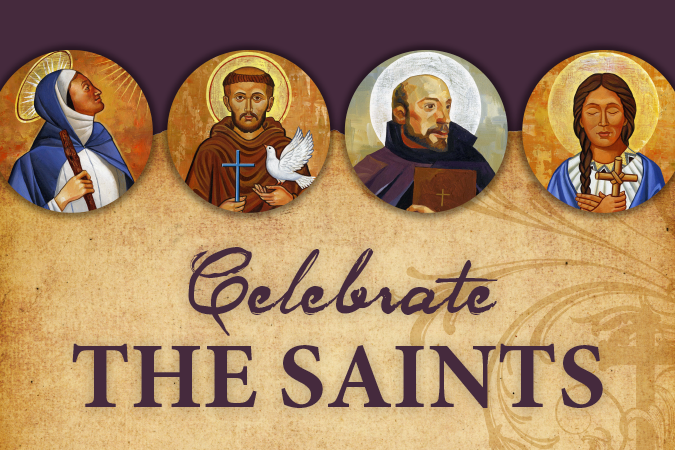None of us is purely original. The fact is, we human beings learn by imitation. As infants, we begin making sounds that imitate the sounds made by those around us. Before long, we are shaping words with those sounds, achieving the ability to communicate with others. Our imitation doesn’t stop there, however. Scientists have shown that imitation cannot be dismissed as some sort of lower form of learning but is a quite sophisticated intellectual activity. Simply defined, imitation is when one individual observes the actions and behaviors of another and then replicates them. What’s interesting, though, is that this kind of imitation does not lead to conformity, because each of us must work at adapting the behaviors we see to our unique abilities and circumstances. And so, imitating the actions and behaviors of others can actually help us become the unique persons God calls us to be. For this reason, Catholics do not hesitate to look to the saints as people worthy of imitating.
By learning about the saints and how their relationships with the risen Christ transformed their lives, we seek to grow closer to Christ and experience transformation for ourselves. Because human beings learn through imitation, it should come as no surprise that as we seek to grow spiritually, we look to other people—parents, godparents, and others, who, by example, show us how to follow Jesus. By imitating the saints even in small ways, we can learn how to respond to God’s call in our own lives.
One of the most beneficial aspects of studying the saints is our discovery that holiness comes in many shapes and sizes. Some saints were quiet while others were loud. Some were intellectuals while others were uneducated. Some wrote volumes while others did not record a single word. Some were known for wise sayings while others were known only by their actions.
Since we know that children learn through observation and imitation, we can do everything in our power to ensure that they are exposed to positive behaviors from positive role models. As a catechist, one critical way that you can do this is by introducing children of all ages to the stories and lives of the saints. In our Christ Our Life program, a saint’s story is featured in every chapter. Loyola Press also has a number of wonderful books designed to help young people engage with the lives of the saints. Consider the following:
- The Loyola Treasury of Saints by David Self
- Loyola Kids Book of Saints by Amy Welborn
- Little Lessons from the Saints by Bob Burnham
- My Best Teachers Were Saints by Susan Swetnam
- Saints and Feast Days by the Sisters of Notre Dame of Chardon, Ohio
- Voices of the Saints by Bert Ghezzi
- Santos Americanos by Arturo Pérez-Rodríguez and Miguel Arias
- Saints of the Americas by Arturo Pérez-Rodríguez and Miguel Arias
Finally, don’t miss the Saints Stories for All Ages feature on our Loyola Press website.
All Saints Day is November 1. Plan ahead to celebrate All Saints Day with your class.

If you are using Christ Our Life, you may wish to use the special lesson on Our Lady of Fatima in the Grade 5 book during this month. Learn more about the Christ Our Life faith formation program here.
Also see:
Marian Resources
Rosary Craft Activities
Teaching the Rosary
Creative Ways to Pray the Rosary
The Rosary: A Path into Prayer by Elizabeth M. Kelly
The Complete Rosary: A Guide to Praying the Mysteries by William G. Storey





Be the first to comment